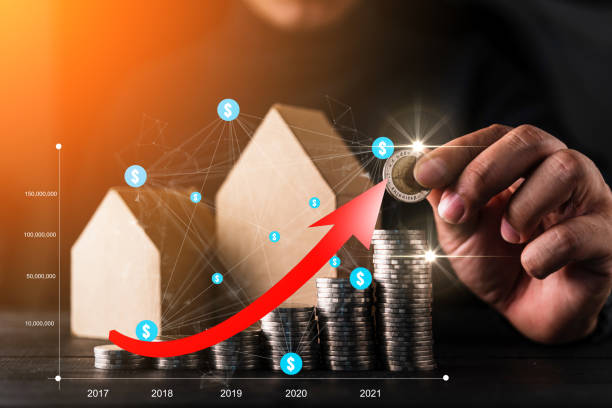
In the modern business landscape, efficiently managing assets is crucial for success.
This article delves into the realm of Internet of Things (IoT) technology and how it’s revolutionising asset tracking and management.
Get ready to explore how IoT is reshaping traditional asset management practices.
Unveiling the IoT Landscape for Asset Tracking

According to SlideShare, IoT brings physical objects into the digital realm, allowing them to communicate and share data with each other and central systems.
In asset tracking, this means embedding devices with sensors and connectivity, enabling real-time monitoring of location, status, and performance.
The result? Enhanced visibility and control over assets scattered across diverse locations.
The Role of Sensors in Asset Tracking
Sensors are at the heart of IoT asset tracking.
These tiny devices collect data—like location, temperature, humidity, and vibration—and transmit it to central platforms.
This data provides insights into asset conditions and movements, offering a wealth of information for proactive maintenance and optimised operations.
Real-time Monitoring and Data Analytics
IoT-powered asset tracking provides real-time updates on asset whereabouts and conditions.
This not only prevents loss and theft but also enables predictive maintenance.
With the integration of data analytics, businesses can extract actionable insights from the collected data, allowing them to make informed decisions that improve operational efficiency.
Streamlining Inventory Management
Gone are the days of manual inventory checks. MachineEngine says IoT asset tracking automates the inventory process by continuously monitoring asset movement.
Whether it’s warehouse storage, supply chain transit, or on-site deployment, IoT ensures that every asset’s location and status are accurately recorded, eliminating guesswork and reducing human error.
Enhancing Asset Utilisation and ROI
Zebra BI cited that IoT-enabled asset tracking uncovers utilisation patterns and idle periods.
This data empowers businesses to optimise asset allocation, potentially reducing the need for excess inventory.
Additionally, by extending the lifespan of assets through predictive maintenance, IoT contributes to a higher return on investment (ROI).
Mitigating Risk and Ensuring Compliance
In industries where asset integrity and compliance are paramount—such as healthcare, logistics, and manufacturing—IoT shines.
It enables precise temperature monitoring for sensitive goods, ensures proper handling of hazardous materials, and tracks equipment performance to meet regulatory standards.
Seamless Integration into Existing Systems
One of IoT’s strengths is its ability to seamlessly integrate with existing business systems.
IoT platforms can be customised to work with Enterprise Resource Planning (ERP), Customer Relationship Management (CRM), and other software, ensuring that asset tracking is a part of the holistic operational strategy.
Future Trends and Beyond
As technology evolves, the possibilities for IoT in asset tracking and management are boundless.
With the rise of 5G connectivity and edge computing, even more real-time insights can be gleaned from assets, and the potential for autonomous asset management becomes tantalisingly close.
Okay my lovely readers, now let us look into some frequently asked questions (FAQs) about How to use IoT in asset tracking and management.
How can I utilise IoT for asset tracking and management?
Employ IoT by attaching sensors to assets, which transmit data to a central system. This data aids in real-time tracking, maintenance, and optimization.
What benefits does IoT-based asset tracking offer businesses?
IoT enhances visibility, reduces manual tracking efforts, prevents loss, optimises asset usage, and improves overall operational efficiency.
Can IoT be integrated with existing asset management systems?
Yes, many IoT solutions are designed for integration. They can complement and enhance the capabilities of your current asset management systems.
Do I need technical expertise to implement IoT for asset tracking?
While some technical knowledge can be helpful, user-friendly IoT platforms offer accessible solutions that don’t require extensive technical skills.
How accurate is IoT-based asset tracking?
IoT provides real-time data, offering high accuracy in asset tracking. However, occasional calibration and maintenance are necessary for optimal performance.
How does IoT help in preventive maintenance of assets?
IoT sensors provide data on asset conditions, allowing predictive maintenance. This minimises downtime and reduces costs by addressing issues before they escalate.
What’s the future of IoT in asset tracking and management?
The future holds exciting possibilities. IoT will continue evolving, introducing advanced sensors and analytics that enhance asset management efficiency.
Conclusion
The fusion of IoT and asset tracking is nothing short of transformative.
By imbuing everyday objects with digital capabilities, businesses gain unprecedented control and visibility over their assets.
Whether it’s optimising inventory, mitigating risk, or predicting maintenance needs, IoT is poised to reshape how we manage and interact with the physical world.
The journey to efficient and intelligent asset management begins with understanding the power of IoT—a technology that’s changing the game for industries worldwide.








